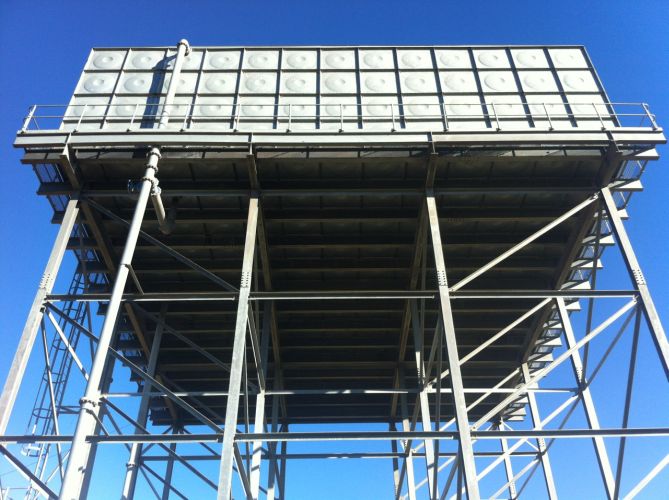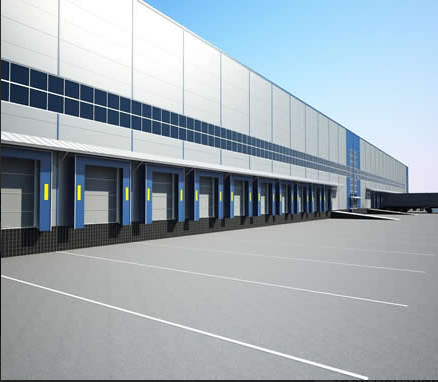Steel building cladding has become a popular choice for both commercial and industrial buildings due to its durability, aesthetic appeal, and cost-effectiveness. Cladding refers to the outer layer or skin of a building, and steel is often used because it offers numerous advantages over other materials. However, like any construction material, steel cladding has its pros and cons depending on the application, environmental conditions, and long-term goals of the project. Understanding these benefits and limitations can help you make an informed decision when selecting steel cladding for your building.
At Omiga Construction Engineering, we specialize in providing high-quality steel building solutions that meet the diverse needs of our clients. In this article, we’ll explore the advantages and disadvantages of using steel cladding, particularly for different applications, and how you can decide whether it’s the right choice for your project.
What is Steel Building Cladding?
Steel building cladding is an exterior covering or protective layer made from steel, often used in the construction of warehouses, industrial buildings, commercial structures, and even residential homes. Steel cladding serves several important functions: it protects the building from the elements, provides insulation, and adds to the building’s aesthetic appeal. Steel cladding is available in various finishes, including corrugated sheets, flat panels, and ribbed designs, which can be customized to suit the style and function of the building.

Pros of Steel Building Cladding
1. Durability and Strength
One of the most significant benefits of steel cladding is its durability. Steel is highly resistant to the elements, including harsh weather conditions such as rain, snow, high winds, and extreme temperatures. Unlike wood or vinyl cladding, which can warp, rot, or fade, steel cladding maintains its structural integrity over time, making it a long-lasting option for buildings.
Steel is also resistant to pests like termites, which can be a significant issue for other materials like wood. This makes steel cladding an excellent choice for buildings that need to withstand heavy wear and tear or are located in areas prone to infestations.
2. Low Maintenance
Steel cladding requires minimal maintenance compared to other materials. Unlike wood, which needs to be repainted regularly or vinyl that may crack or fade, steel cladding is highly resistant to rust, fading, and staining. Periodic cleaning is usually sufficient to maintain the appearance of the cladding. Some steel cladding options are coated with special finishes to enhance corrosion resistance, ensuring that your building stays in good condition with very little upkeep.
3. Energy Efficiency
Steel cladding can contribute to improved energy efficiency in buildings. When used with appropriate insulation materials, steel cladding can help regulate temperature inside the building, reducing the need for heating or cooling systems. Steel's reflective surface helps deflect sunlight, reducing heat absorption in hot climates and making it an energy-efficient option for buildings exposed to direct sunlight.
Additionally, many steel cladding products are available with insulated panels, which provide both structural support and thermal resistance, enhancing overall energy efficiency and lowering utility bills.
4. Aesthetic Flexibility
Steel cladding offers a wide variety of aesthetic options to suit different architectural styles. Whether you’re looking for a sleek, modern look or a more traditional style, steel can be manufactured in a range of colors, finishes, and textures. Steel cladding can also be shaped and cut into different profiles to create a unique, customized design for the building’s exterior.
This level of flexibility in design makes steel cladding a versatile choice for both industrial and commercial buildings, as well as residential properties, allowing for both functionality and visual appeal.
5. Sustainability
Steel is a highly recyclable material, making it an environmentally friendly choice for building cladding. In fact, steel is one of the most recycled materials in the world, and using recycled steel for cladding can significantly reduce the carbon footprint of a building project. Additionally, steel cladding’s longevity means fewer replacements or repairs are required over time, reducing the overall environmental impact of maintenance.
Cons of Steel Building Cladding
1. Initial Cost
While steel cladding can be cost-effective over the long term due to its durability and low maintenance, the initial installation cost can be higher than other cladding materials, such as wood or vinyl. The price of steel varies depending on factors like quality, thickness, and finish, so it’s essential to budget accordingly. However, for large-scale commercial or industrial buildings, the long-term savings in maintenance and durability often outweigh the higher upfront cost.
2. Susceptibility to Dents and Scratches
While steel cladding is strong, it can be susceptible to dents and scratches, particularly in areas that are prone to heavy impacts. For example, in industrial areas where machinery or vehicles are frequently in use, steel cladding can become scratched or dented, affecting its appearance. However, there are protective coatings and treatments available that can reduce this risk and enhance the material’s resistance to impact damage.
3. Thermal Expansion
Like all metals, steel expands and contracts with temperature fluctuations. This thermal expansion can cause the steel cladding to warp or buckle if it is not installed correctly or if the proper expansion joints are not included. Ensuring that the cladding is properly installed by experienced professionals can help mitigate this issue and ensure that the structure remains stable over time.
4. Noise
Steel cladding can sometimes amplify sound, which may be an issue in certain applications. If noise reduction is a concern for your building—such as in residential areas or spaces with high foot traffic—you may need to consider adding additional insulation to the cladding to minimize noise. In commercial and industrial applications, noise reduction may not be as critical, but for other uses, it’s an important consideration.
5. Condensation
In certain climates or conditions, condensation can build up behind steel cladding if it is not adequately ventilated. This can lead to moisture buildup, which may cause corrosion or mold growth on the building’s structure. To avoid this problem, it’s essential to ensure proper ventilation and insulation to manage moisture levels and maintain a dry environment behind the cladding.

Applications of Steel Cladding
Steel cladding is used in a wide variety of applications, from large industrial complexes to residential buildings. Here are some of the most common uses:
1. Commercial and Industrial Buildings
Steel cladding is widely used in commercial and industrial buildings, such as warehouses, factories, and storage facilities. Its durability, low maintenance, and resistance to the elements make it an ideal choice for structures that need to withstand heavy use and environmental wear.
2. Agricultural Buildings
In agriculture, steel cladding is often used for barns, silos, and other farm structures. The material’s strength and ability to resist pests and weather conditions make it a practical and cost-effective solution for rural properties.
3. Residential Homes
While steel cladding is more commonly associated with industrial and commercial buildings, it’s also gaining popularity in modern residential architecture. Steel cladding can provide a sleek, contemporary look for homes, while offering the durability and low maintenance that homeowners desire.
4. Public Buildings and Infrastructure
Steel cladding is often used in public buildings such as schools, hospitals, and government offices. Its durability and aesthetic flexibility make it suitable for creating functional yet visually appealing public spaces.
Why Choose Omiga Construction Engineering for Your Steel Cladding Needs?
At Omiga Construction Engineering, we specialize in providing high-quality steel cladding solutions that meet the needs of our clients across various industries. Whether you’re looking for a durable cladding solution for an industrial building, a sleek finish for a commercial space, or a modern look for a residential project, we offer a range of customizable options designed to suit your needs.
Our expert team works closely with you to understand your specific requirements, offering guidance on material selection, installation, and maintenance. With a commitment to quality, efficiency, and customer satisfaction, we ensure that your steel cladding system will be durable, cost-effective, and visually appealing for years to come.
Conclusion
Steel building cladding is a versatile and durable solution for a wide range of applications, offering long-lasting protection, aesthetic appeal, and low maintenance. While there are some considerations to take into account—such as initial costs and potential noise issues—steel cladding’s benefits far outweigh the drawbacks for many projects. Whether you're working on a commercial, industrial, or residential building, steel cladding provides a reliable solution that will serve you well in the long term.
At Omiga Construction Engineering, we are committed to helping you choose and implement the right steel cladding system for your project, ensuring that you achieve the perfect balance of performance, aesthetics, and longevity. Choose steel cladding for your next construction project and experience the many advantages it offers.


